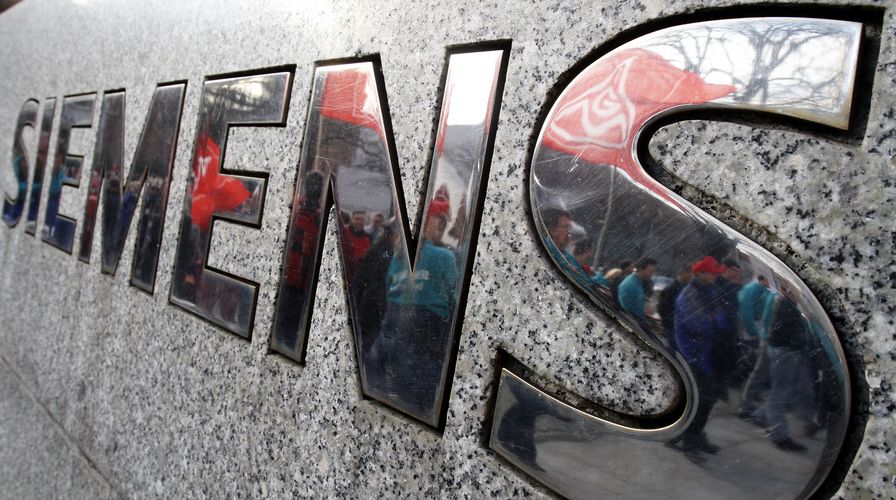Siemens had seemingly given up on the equity-linked market after it shrank into obscurity, but after a nine-year absence it returned with a market-defining transaction.
To view the digital version of this report, please click here.
The European convertible bond market had slipped into obscurity after a rush of issuance in the first years of the 21st century. The years 2001 and 2003 – where issuance was close to US$50bn – are a distant memory, but the first jumbo since the good old days, courtesy of Siemens provided a glimmer of hope for a brighter future.
When Siemens returned to the equity-linked market after a nine-year absence it did so in style. The market had rapidly shrunk into something of an irrelevance and bankers faced an annual struggle for survival.
Yet the market suddenly came alive as the German engineering business launched an offering of US$3bn bonds with warrants. The last equity-linked trade of that size came in 2003 – from the same issuer.
The scale of the deal seemed to suit Siemens which was only in the market with three trades throughout the year to raise its US$8.5bn total – the other major move was a €4bn loan. So making sure the whole trade could be absorbed by the market was crucial.
Split into two tranches of US$1.5bn, bonds were offered with tenors of 5-1/2 years and 7-1/2 years and each bond placed came with one euro-denominated warrant attached. The 2017s were launched with a coupon of 0.55%–1.05% and the 2019s of 1.15%–1.65%.
Pricing for both came at the best terms for investors with coupons at the top end of the ranges and the warrant premium 37.5%, from guidance of 37.5%–42.5%. Based on guidance, the bond floor was around 92%–95%. One-month historic volume for the stock is around 27% and implied volume came in the low-to-mid 20s.
Yet pricing was still punchy considering European convert bankers are out of practice with anything over US$1bn so could not be sure of the scale of demand for three times that amount of paper. Ultimately the unceasing shortage of investment-grade paper and desperate desire from investors to boost the credit quality of their holdings got the deal done. The book was full of outright demand, particularly from fixed income accounts.
None seemed concerned at holding dollar bonds and euro warrants, while this structure – rather than a straightforward convertible bond – meant Siemens raised funds in the currency it wished, yet could avoid any foreign exchange-related headaches by issuing warrants in its reporting currency. The euro warrants also ensure that when investors exercise the option it is based purely on the stock performance rather than euro/dollar swings. Investors also benefit by being able to separate the two parts.
Deutsche Bank was sole global co-ordinator and was joined the night before launch by joint bookrunners Barclays, Credit Suisse and JP Morgan.
The deal not only raised funds for Siemens – it reinvigorated the structured equity market in Europe. It was only the third deal of the year when it priced on February 9 but a rare stream of deals followed in the subsequent weeks, including from adidas and Finnish government holding vehicle Solidium.
Back with Bunds
A measure of the vibrancy of the structured equity market that followed Siemens’ benchmark issue was its swift, but incredibly unusual return less than six weeks later. What initially appeared to be a German state issue of exchangeable bonds into Draegerwerk led by Deutsche Bank turned out to be Siemens using a ravenous investor base to improve pricing on a disposal of shares.
Neither the government nor the technology company were involved.
Siemens wanted to offload well in the money warrants over 1.25m Draegerwerk preference shares, equivalent to 19.7% of the outstanding, and the success of Siemens’ own deal led it to package these into another bonds plus warrants structure.
After Deutsche had made the April 2015 warrants tradable, some Bunds of a near tenor (2.5% due February 27 2015s) were sourced and bundled – to create Triple A rated March 2015 exchangeables.
As the warrants have an exercise price of €63.68, versus the €78.40 placing price, this was a true technical trade, but a few outrights were present in the 40-line book and were filled in full.
The trade underlines the effort banks will put in for a key client, even for such a tiny deal, but also the vitality of the structured equity market that meant the effort involved on such a small deal was deemed worthy, and profitable for client and bank.
Seven for five
Siemens took advantage of banks’ appetite for highly rated German debt by agreeing a €4bn revolving credit facility in April 2012, replacing an existing undrawn US$5bn facility that was originally agreed in 2005.
European banks that have generally been retreating back to domestic borders have remained ensconced in Germany, reassured by the undiminished economic strength of both the country and its companies.
Pricing on the loan seemed aggressive at 30bp over Euribor, but the loan still raised over €7.5bn in syndication. The deal also carried a five-year maturity, with two one-year extension options, meaning Siemens secured liquidity for up to seven years – at a five-year price.
Some minor concessions were made on the loan. In line with other recent European deals, the financing was redenominated from US dollars to euros to alleviate pressure on European banks which have been hit hard by high dollar funding costs. Lenders also took comfort from the knowledge that the loan was very unlikely to be drawn and would not have substantial implications for banks under new capital requirement regulations.
Notably the borrower’s Siemens Bank arm, established in December 2010, gives the company increased financial flexibility by being able to deposit cash and refinance using European Central Bank accounts, and has itself been active in the syndicated loan market as a lender.

